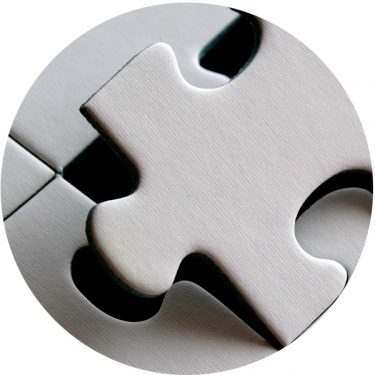Process
Introduction

Because a project’s life can span over several years, a simple introduction can lead to a long term relationship. In this context personalities and expectations are equivalent in importance. Too often architects and clients assume that a project is solely a financial endeavor. It is common to hear questions such as how big is the project, how much money is at stake, or how quickly can this project be developed? Business relationships will eventually encounter hardship, it frequently takes both parties to find a solution. Personalities that work well together will find better solutions than personalities that clash. The introduction phase is one of the most important phases for determining the long term success of a project. First impressions are important for both ownership and the architect.

"There is nothing in a caterpillar that tells you it's going to be a butterfly."
Buckminster Fuller
Programing

Clearly programing is directly related to the project cost, and yet the significance of programing is often undervalued. In many ways, programing a building can be analogous to packing a suitcase. It is obviously important to understand what is essential when packing a suitcase for a trip, and in the same way it is also important to understand what are the essentials when developing a building program. Analogously, the cost of the building can also be viewed as the size of the suitcase. A larger suitcase can clearly hold more clothing, but a larger suit case is more money. Too often individuals over pack the building program in the beginning which eventually leads to a period of jettisoning during a value engineering phase. Our approach is to refine the program early and so as to limit costs in the programing phase.

Feasibility Study

Feasibility and programing should work together. The objective of this phase is to create several test fits to uncover the solution that will work best. During this phase it is important to determine what works and what does not. Too often we jump past this phase in a hurry to get to the design phase of a project. It is important to understand that architecture is a rational design process and it requires a tremendous amount of planning and analyzing before the design starts to develop. Skipping past these initial phases and going straight to the design phase can result in compromises down the line.

Concept Design

The concept design phase is also known as the options phase. It combines all the elements of the previous two phases with the statement “what if.” This phase is comparable to charting multiple routes to summit a mountain. Maybe the choices of routes are narrowed down to a type of climb but not to a specific trail. For example, a slow and constant assent is desired but the choices are between ascending along a river vs ascending along a ridge. Both routes will end up in at the same destination but the experiences are different. The program remains static, the methods of putting the chosen program together will be conceptual. We feel it is important to evaluate all options closely with the client to best determine the client's preferences.

Schematic Design

This phase further develops the concept into a detailed analysis. Throughout this stage aesthetics play an increasing role in how the options evolve. An analogy of selecting a hat is useful to understand this phase. The desired type of hat is established, the look and feel of the hat are now in focus. A range of detailed shapes are explored bringing focus to the ultimate direction. It is worth reiterating the importance of these early phases. Poor choices made at the beginning lead to problems during the later phases. Establishing an accurate baseline during the early part of project is central to a successful outcome.
![]()
Design Development

As it's name suggest, the Design Development phase is the "development" part. It is the process of taking apart the schematic phase and developing each of the components of the design and studying them in detail. Do all of the systems work, are they the right size, and is it all working together? Each component of the building is examined to ensure the overall design is working efficiently. This phase tends to be much longer in duration than the previous phases. This phase is similar to dismantling an engine, checking each component to see if they are in working order and if they work well together.

Construction Documents

The construction document phase is the “how to” phase. This phase is similar to creating an instruction manual. The documents and drawings complied are designed to show how the building is to be built. These documents also show the relevant city officials, such as fire department or building department, how our building addresses and incorporates building codes. This phase tends to be documentation heavy due to the amount of information that must be conveyed. It is a challenging phase that some architects are not equipped to execute properly. It is during this phase when poor decisions made during the earlier phases arise to become greater issues. This phase is not an extension of design development.

Bidding and Plan Check

After the Construction Documents have been completed, the contractor, will give a final price to build the project. The construction documents are grounded in design intent, meaning the contractor can substitute many of the materials to achieve the same result. This phase is similar to selecting a generic product in lieu of an established brand. For the most part the generic substitute is acceptable, and can translate to cost savings for the client. However in some cases, the generic substitute may not achieve the same performance or aesthetic criteria of the original. During this phase we will review the options with ownership as to the pros and cons of each option.

Construction Administration

Construction administration is key to ensuring the building is built per the description of the documents. The architect’s role is to oversee the accuracy of the building being built. Through the use of requests for information, architect’s supplemental information, observations, submittal reviews, change orders, construction change directives, sample approvals, applications for payment, and certificates for payment, the architect is able to verify that the contract documents are understood and followed as agreed upon.

Completion

Substantial completion is one of the most exciting and anticipated milestones of a project. This phase represents one of the final pieces of the puzzle before a project is fully complete. Final completion for a project include; occupation of the building, the release of lien rights, and seeing the design concept finally establish itself in the built environment. The punch list, or the "to do list," is one of the last major tasks the contractor must complete. This task is often viewed as being overly concerned with minutia and is exceedingly tedious. However, it represents a final quality control mechanism ensuring ownership will receive a quality building. It is our view that this phase is one of the most important aspects of the entire project.






